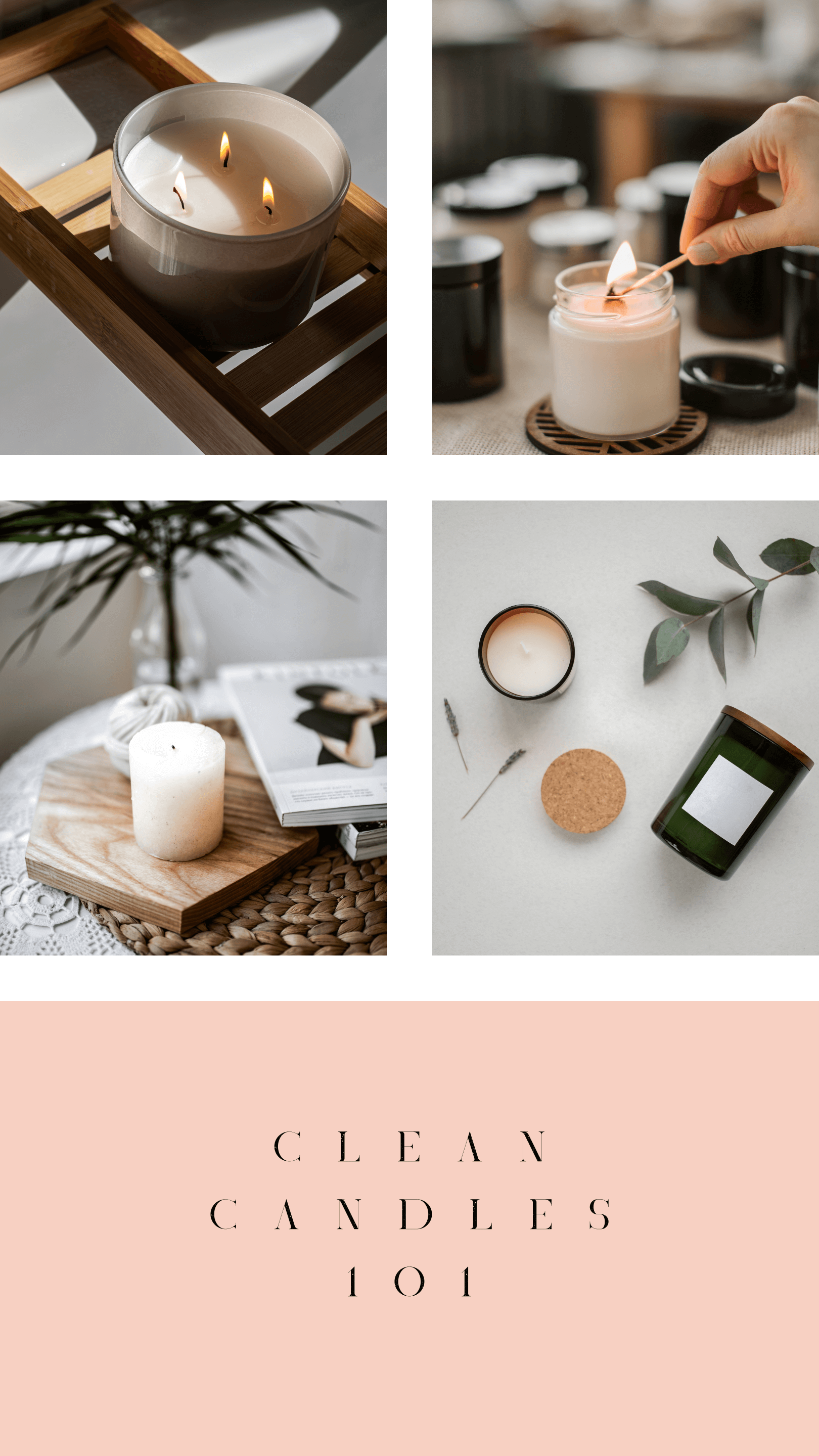Lighting a candle, especially when there’s a chill in the air, instantly ups the cozy factor. (It’s one of my 6 Ways to Get Cozy, right after slippers). And in a world where even sports bras have chemicals in them it is important to pay attention to what your favorite scented candle is made of.
Because if it’s got paraffin wax you’ll be filling your home with diesel fuel fumes.
Okay – that’s a shocking statement but paraffin wax creates highly toxic benzene (yes, the same carcinogen in the news for being in spray sunscreens) and toluene (another known carcinogen which occurs naturally in crude oil).
Yuck.
When you search “Is Benzene harmful to humans?” here’s what comes up from the CDC: Benzene works by causing cells not to work correctly. For example, it can cause bone marrow not to produce enough red blood cells, which can lead to anemia. Also, it can damage the immune system by changing blood levels of antibodies and causing the loss of white blood cells.
WTF?!
And the CDC says on their website: Exposure to toluene can cause eye and nose irritation, tiredness, confusion, euphoria, dizziness, headache, dilated pupils, tears, anxiety, muscle fatigue, insomnia, nerve damage, inflammation of the skin, and liver and kidney damage. Workers may be harmed from exposure to toluene.
Ummm no thank you.
We haven’t even gotten into fragrance issues or sneaky metals hiding in the wick! (Some candles have a tiny wire inside that releases microscopic heavy metals when burned which can disrupt your hormones, reproductive and neurological systems.)
ACK!
Technically lead in wicks has been banned since 2003 but I wouldn’t put all my eggs in the government oversight basket. Which reminds me of the word… loophole.
As in, Fragrance Loophole.
Fragrance acts as a loophole on the FDA’s regulation of product ingredients. Fragrance is called a “trade secret” under the Fair Package and Labeling act of 1966, allowing companies to refrain from listing ingredients, so their specific formula cannot be knocked off easily by copycats.
The common ingredients found in perfume are benzyl alcohol, acetone, linalool, ethanol, ethyl acetate, benzaldehyde, camphor, formaldehyde, methylene chloride and limonene. Synthetic musks and phthalates are potentially hazardous compounds which are also used as perfume ingredients. Coumarin, á-amyl cinnamaldehyde, benzyl benzonate, p-anisaldehyde and benzyl acetate are aroma chemicals used most widely in cosmetics and toiletries.
The perfume ingredients chemicals find applications in soaps & detergents, cosmetics & toiletries, fine fragrances, household products such as incense sticks, scouring cleaners, candles, woodwork, etc. and other products such as aromatherapy and pesticides. (source)
These chemicals can be in anything with “Fragrance” on the label. So if you see “fragrance” listed – even “natural fragrance” (a perfect example of greenwashing) drop the product and run for the hills.
The safer option for fragrance in candles, cleaning and personal care products is essential oils. They are trickier to use in candle production because they’re more volatile and aren’t as strong as “fragrance oils” which were designed specifically for candle making. Fragrance oils are made in a lab. They contain a type of chemical called Diethyl Phthalate (DEP). DEP is a known carcinogen and has been linked to sperm production issues. (source, source)
Yes friends, toxic chemicals in products sold on American shelves is not just a woman’s issue.
Okay, back to candles.
Sure, I’ll grant you that the amount released from one scented candle probably won’t lead to serious effects but why risk it when there are plenty of safer options available. Candles made from Soy, Bees and Coconut Wax are significantly safer to burn in your home. Plenty of companies are making their scents with essential oils only making them a much safer option. And 100% cotton or wood wicks are available.
Now that we know what to look for here are my favorite clean candle options.

Nicolet Candle Company
Clean, hand-poured scents. Bergamot and Tarragon is the closest to the New Home signature scent we burn in the front room. Olive Blossom is the one I light on my desk when it is work time. And Forest Pine is our holiday candle.
EMO Candles
It took me a while to pick a favorite but Hungover got me because the hint of tomato was fun, unexpected and adds a freshness to the scent. Erin even dishes out candle care tips which I appreciate!
P.F. Candle Co
available at Winnie Cooper Boutique
I enjoy Golden Coast, Black Fig and any seasonal scent.
MORE
via Healthline
- Best nontoxic candle with refills: Grow Fragrance Candles
- Best nontoxic candle with soy wax: Slow North Candles
- Best nontoxic candle for scents inspired by nature and travel: Brooklyn Candle Studio (I have the Santal room spray and I love it when things need a little freshening up)
- Best nontoxic candle with coconut wax: Pure Plant Home Candles
- Best outdoor-scented candles: Keap Candles
- Best “clean” candles: Heretic Candles
- Best candle with beeswax: Fontana Candle Co.
- Best candle for sustainability: Terralite
- Best candle with organic essential oils: CandaScent Labs
- share -